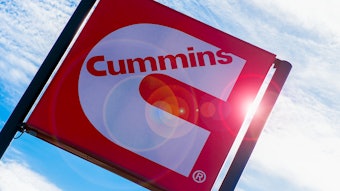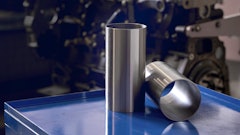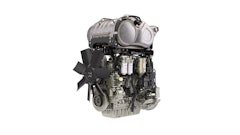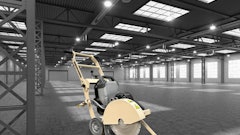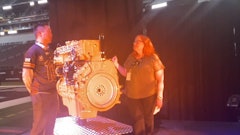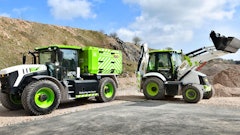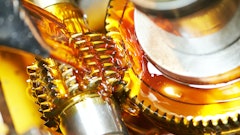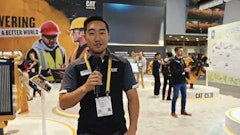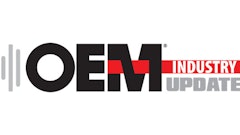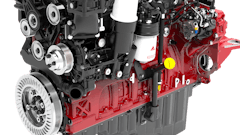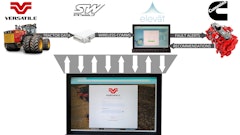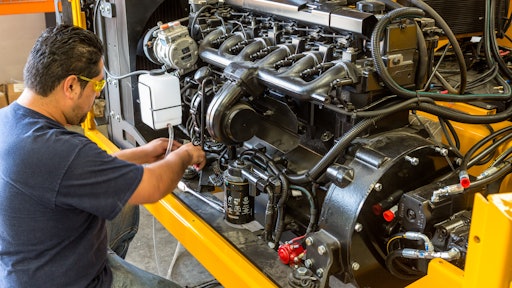

John Deere Power Systems announces its lineup of Stage V ready engines to meet the recently implemented European Union (EU) Stage V emissions regulations. Leveraging new catalyst technologies, emissions control calibrations and next generation aftertreatment solutions, John Deere PowerTech engines will deliver greater package flexibility and offer easier installation over previous John Deere engines.
The John Deere lineup of Stage V ready engines is optimized for increased torque response, low-speed torque, fluid efficiency, and provides responsive power at higher altitudes. The lineup of Stage V ready engines from John Deere includes engine displacements of 2.9 L, 4.5 L, 6.8 L, 9.0 L and 13.5 L with ratings of 36–448 kW (48–600 hp).
“John Deere is committed to helping OEMs through every step of the application process,” says Martin Ryley, Manager, Marketing Services and Sales Engineering Europe, Africa and Middle East, John Deere Power Systems. “We are well positioned to transfer our experience from various applications and operating conditions directly to our customers, giving them peace of mind. OEMs, regardless of location, are best served through timely and strategic preparation, and John Deere is ready to help them identify and implement the best solutions for their business.”
OEMs will benefit from the continual product improvements and advancements John Deere is making by retaining the same engine performance in a reduced package size. John Deere achieved reduced package sizes with next generation aftertreatment solutions that provide up to a 39% reduction in size and 57% reduction in weight.
Ryley adds that to achieve Stage V emissions levels for engines in the 19-560 kW power band, manufacturers will have to use DPF technology. “John Deere has been employing DPF technology since Interim Tier 4/Stage IIIB, resulting in more than 425 million hours of field experience,” Ryley says. “We have demonstrated and proven the use of DPF technology in our engines for many internal and external off-highway applications, and will continually refine our system to make enhancements that strengthen application flexibility for OEM customers.”
John Deere Power Systems has extensive experience with the development and integration of DPF technology in both John Deere and OEM equipment through Tier 4 Interim/Stage IIIB and Tier 4 Final/Stage IV implementation. OEMs new to the technology will be able to leverage the John Deere experience as they transition to Stage V.
“Our experience with DPF technology clearly sets a benchmark in the industry that positions John Deere as a leader capable of helping customers seamlessly transition to Stage V,” Ryley says. “That depth of experience extends throughout our distributor network and with all John Deere service dealers, giving us a distinct advantage.”
Moving forward, John Deere will look for additional opportunities to make improvements to existing technology. This will lead to the development of new engine offerings that will continue to meet emissions regulations, while providing the reliable, durable products customers have come to expect from John Deere.
For OEM customers developing applications not impacted by Stage V regulations, John Deere continues to offer its Integrated Emissions Control system in various configurations. “The modular building block approach offered by the John Deere Integrated Emissions Control system offers greater application flexibility to help OEMs meet increasingly challenging machine design goals necessitated by the growing complexity in world emissions standards,” adds Ryley.


